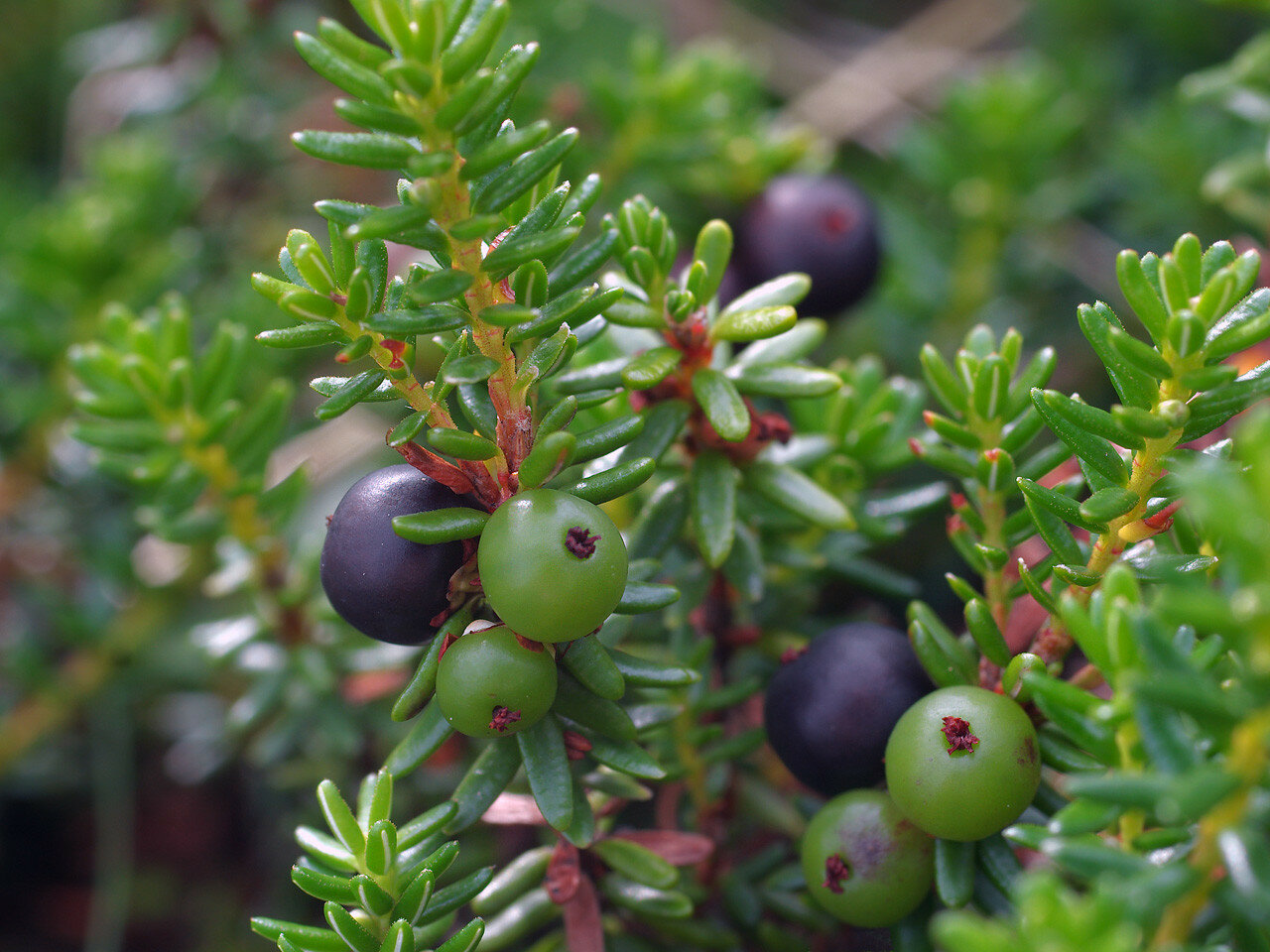VARIABILITY OF BIOLOGICALLY ACTIVE SUBSTANCES CONTENT IN EMPETRUM HERMAPHRODITUM HAGER. LEAVES AND FRUITS UNDER INDUSTRIAL POLLUTION IN THE KOLA PENINSULA
UDK 581.192.2
Abstract
The crowberry Empetrum hermaphroditum Hager. is dominant shrubby hypoarctic species of native flora of the Arctic territory of the Russian Federation, belonging to the Ericaceae family. It is distributed in a wide ecological amplitude, has a significant phytomass, bears fruit profusely and grows throughout the Kola Peninsula. All parts of the studied plant are a source of a various phenolic compounds, which determines its significant pharmaceutical potential. An important factor, in addition to the extreme conditions of the Kola Peninsula, which enhances the synthesis of adaptogenic compounds, is pollution by wastes of copper-nickel production. In connection with the above, the aim of the work was to assess the temporal and spatial distribution of content of the secondary metabolites, synthesized by various organs of Empetrum hermaphroditum under industrial pollution. To assess the total content of polyphenols, flavonoids, total antioxidant and antiradical activity, the method of ultrasonic extraction with 60% ethanol was used. The temporal and spatial distribution of adaptogenic compounds is characterized, and a high content of polyphenolic components in the vegetative organs of the plant is noted. It has been established that the accumulation of pollutants by crowberry plants changes in the following order: leaves > green fruits > ripe fruits. The indicator and accumulative properties of leaves and green fruits of crow plants in relation to Mn were revealed. Extracts of vegetative organs of crow plants can be recommended as a promising source of polyphenolic components.
Downloads
Metrics
References
Kashulina G.M. Pochvovedeniye, 2017, no. 7, pp. 860–873. DOI: 10.7868/S0032180X17070036. (in Russ.).
Kryuchkov V.V., Makarova T.D. Aerotekhnogennoye vozdeystviye na ekosistemy Kol'skogo Severa. [Aerotechnogenic impact on the ecosystems of the Kola North]. Apatity, 1989, 96 p. (in Russ.).
Cherepanov S.K. Sosudistyye rasteniya Rossii i sopredel'nykh gosudarstv (v predelakh byvshego SSSR). [Vascular plants of Russia and neighboring states (within the former USSR)]. St. Petersburg, 1995, 990 p. (in Russ.).
Ramenskaya M.L. Analiz flory Murmanskoy oblasti i Karelii. [Analysis of the flora of the Murmansk region and Kare-lia]. Leningrad, 1983, 216 p. (in Russ.).
Tsvetov N., Sereda L., Korovkina A., Artemkina N., Kozerozhets I., Samarov A. Biomass Conversion and Biorefinery, 2022, vol. 12, pp. 145–156. DOI: 10.1007/s13399-022-02299-2.
Lorion J., Small E. The Botanical Review, 2021, vol. 87(3), pp. 259–310. DOI: 10.1007/s12229-021-09248-0.
Bezverkhniaia E.A., Ermilova E.V., Kadyrova T.V., Krasnov E.A., Brazovskii K.S., Ponkratova A.O., Luzhanin V.G., Belousov M.V. Bezverkhniaia E. Advances in Traditional Medicine, 2023, vol. 23(3), pp. 659–672. DOI: 10.1007/s13596-021-00612-4.
Beydeman I.N. Metodika fenologicheskikh nablyudeniy pri geobotanicheskikh issledovaniyakh. [Methodology for phe-nological observations in geobotanical research]. Moscow; Leningrad, 1954, 130 p. (in Russ.).
Meier U., Bleiholder H., Buhr L., Feller C., Hacks H., Hess M., Lancashire P.D., Schnock U., Stauss R., Boom van den T., Weber E., Zwerger P. Journal für Kulturpflanzen, 2009, vol. 61, pp. 41–52. DOI: 10.5073/JfK.2009.02.01.
Meier U. Growth stages of mono- and dicotyledonous plants BBCH. Quedlinburg, 2018, 204 p. DOI: 10.5073/20180906-074619.
Gosudarstvennaya farmakopeya RF, XIV izd. [State Pharmacopoeia of the Russian Federation, XIV ed.]. Moscow, 2018. (in Russ.).
GOST 17.4.4.02-2017. Mezhgosudarstvennyy standart. Okhrana prirody. Pochvy. Metody otbora i podgotovki prob dlya khimicheskogo, bakteriologicheskogo, gel'mintologicheskogo analiza. [GOST 17.4.4.02-2017. Interstate standard. Protection of Nature. Soils. Methods of sampling and preparation of samples for chemical, bacteriological, helmintho-logical analysis]. Moscow, 2017, 10 p. (in Russ.).
Mingorance M.D., Valdés B., Oliva S.R. Environment International, 2007, vol. 33(4), pp. 514–520. DOI: 10.1016/j.envint.2007.01.005.
Serbula S.M., Miljkovic D.D., Kovacevic R.M., Ilic A.A. Ecotoxicology and Environmental safety, 2012, vol. 76, pp. 209–214. DOI: 10.1016/j.ecoenv.2011.10.009.
Slukovskaya M.V., Kremenetskaya I.P., Mosendz I.A., Ivanova T.K., Drogobuzhskaya S.V., Ivanova L.A., Novikov A.I., Shirokaya A.A. Environmental Geochemistry and Health, 2023, vol. 45(1), pp. 67–83. DOI: 10.1007/s10653-022-01263-3.
Kashulina G.M., Saltan N.V. Khimicheskiy sostav rasteniy v ekstremal'nykh usloviyakh lokal'noy zony kombinata «Severonikel'». [Chemical composition of plants in extreme conditions of the local zone of the Severonickel plant]. Apatity, 2008, 239 p. (in Russ.).
Kandziora-Ciupa M., Nadgórska-Socha A., Barczyk G., Ciepa R. Ecotoxicology, 2017, vol. 26, pp. 966–980. DOI: 10.1007/s10646-017-1825-0.
Kandziora-Ciupa M., Dabioch M., Nadgórska-Socha A. Biological Trace Element Research, 2022, vol. 200(9), pp. 4175–4185. DOI: 10.1007/s12011-021-02989-4.
Liu J., Shang W., Zhang X., Zhu Y., Yu K. Journal of Hazardous Materials, 2014, vol. 267, pp. 136–141. DOI: 10.1016/j.jhazmat.2013.12.051.
Kopylova L.V. Izvestiya Samarskogo nauchnogo tsentra RAN, 2010, vol. 12, no. 1-3, pp. 709–712. (in Russ.).
Pobilat A.Ye., Voloshin Ye.I. Mikroelementy v meditsine, 2017, vol. 18, no. 2, pp. 43–47. DOI: 10.19112/2413-6174-2017-18-2-43-47. (in Russ.).

Copyright (c) 2024 chemistry of plant raw material

This work is licensed under a Creative Commons Attribution 4.0 International License.

This work is licensed under a Creative Commons Attribution 4.0 International License.
The authors, which are published in this journal, agree to the following conditions:
1. Authors retain the copyright to the work and transfer to the journal the right of the first publication along with the work, at the same time licensing it under the terms of the Creative Commons Attribution License, which allows others to distribute this work with the obligatory indication of the authorship of this work and a link to the original publication in this journal .
2. The authors retain the right to enter into separate, additional contractual agreements for the non-exclusive distribution of the version of the work published by this journal (for example, to place it in the university depository or to publish it in a book), with reference to the original publication in this journal.
3. Authors are allowed to post their work on the Internet (for example, in a university repository or on their personal website) before and during the review process of this journal, as this may lead to a productive discussion, as well as more links to this published work.











